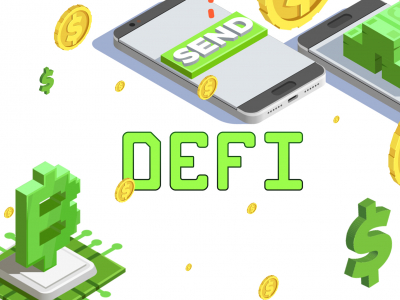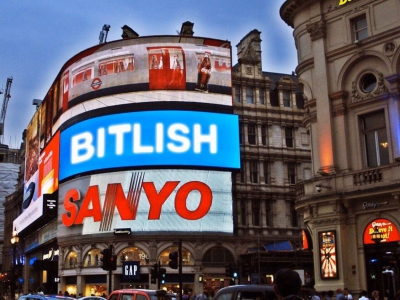Ethereum platform has recently been on the march, partnering Microsoft to present its BaaS toolkit, releasing software, and much more. CoinFox looks into the platform’s distinguishing features.
Ethereum is commonly referred to as a brainchild of a Russian-Canadian programming prodigy Vitalik Buterin who, then a 19-year-old enthusiast of information theory, cryptography, sociology, epistemology, politics, and economics, released the initial white paper in late 2013.
Calling his invention a “next-generation cryptocurrency and decentralised application platform,” Buterin explained that, unlike all of the protocols designed earlier to meet specific needs of specific industries, the project developed by him and his colleagues was intended to be “as generalised as possible,” enabling anyone to create specialised applications “for almost any purpose imaginable.”
Buterin argued that, although excellent for its initial purposes, such as storing and transferring value, bitcoin was less effective as a low-level protocol (or, to put it simple, a platform on top of which different kinds of decentralised applications could potentially be built).
Thus, he decided to develop an alternative protocol that would enable smart contracts (“applications that run exactly as programmed without any possibility of downtime, censorship, fraud or third party interference”) both for financial and non-financial purposes.
In April 2014, Buterin’s colleague Dr Gavin Wood released what is now known as the Yellow Paper, a 32-page draft containing all the necessary computations and substantiations to describe the Ethereum Virtual Machine (EVM).
The paper explains Ethereum as a “very specialised version of a cryptographically secure, transaction-based state machine” that can potentially ensure trust between transacting parties, otherwise unachievable due to geographical separation, interfacing problems, “or perhaps the incompatibility, incompetence, unwillingness, expense, uncertainty, inconvenience or corruption of existing legal systems.”
To fix the human factor problem, Ethereum team developed their system as a “disinterested algorithmic interpreter” able to track any step and show how any state or judgement came about.
Formally announced on 25 January 2014, the project was crowdfunded in August same year by donations from all over the world. After the crowdsale, Ethereum Foundation was established in Zug, Switzerland, as a non-profit organisation supporting developers' education and research in order to encourage the building of the “next generation decentralised applications (dapps)” on Ethereum.
July 2015 saw Ethereum's live blockchain launched. The currency unit for the blockchain called ether had been crowdsaled beforehand in a 42-day public round.
The unit, exchangeable to bitcoin cryptocurrency, is described as a “fuel” for the platform rather than digital money, and was not initially intended to be used as currency, asset or share:
“Ether is a necessary element – a fuel – for operating the distributed application platform Ethereum. It is a form of payment made by the clients of the platform to the machines executing the requested operations.
To put it another way, ether is the incentive ensuring that developers write quality applications (wasteful code costs more), and that the network remains healthy (people are compensated for their contributed resources).”
Ether does not compete with bitcoin, the two of them being complementary to each other within the digital ecosystem.
Moreover, Ethereum provides an opportunity to mint one’s own unique digital currency pegged to the market value of bitcoin, provided that all parties trust the source of price. To this end, one can address Solidity, a high-level language designed for the Ethereum Virtual Machine and similar to JavaScript or any other language compatible.
The currency unit ether, thus, is not intended for market speculators but rather for the developers building apps on the Ethereum blockchain or users ready to flirt with smart contracts.
The total supply of ether, as well as its rate of issuance, was defined during the 2014 presale. 60 mln ether were given out to the contributors, 5 ethers created per block (roughly 15-17 seconds) to reward the miner of the block.
During the presale it was agreed that ether’s issuance would be limited to 18 mln per year (25% of the initial supply). This maximum is promised to be a ceiling even when a new consensus algorithm called Casper is released (expectedly in 2017).
To limit contracts that might take a long time to run, the platform uses a mechanism called “gas” – a measure of computational effort to evaluate transactions. Its value serves as the internal pricing for running a transaction or contract in Ethereum.
So what is Ethereum capable of?
For the time being, the platform provides an opportunity to create a smart contract that holds a contributor's money until any given goal or date is reached. As soon as it is, the funds either return back to their contributors or, in case of success, are automatically given out to the project developers/owners.
This enables running crowdfunding, crowdsales, and auctions without any third party and with a predictable dispersal of possible outcomes. Another – and even more sophisticated – possibility is running an organisation.
Instead of hiring managers and CFOs “to handle the accounts, run board meetings and do a bunch of paperwork,” one can now leave all the work to an Ethereum contract.
As long as the robot is believed to be “immune to any outside influence,” executing only what it is programmed to, it would be able to collect and distribute documents and proposals from the organisation members, submitting them in a “completely transparent” way.
Thus, an Ethereum activist can envisage:
“A virtual organization where members vote on issues;
A transparent association based on shareholder voting;
Their own country with an unchangeable constitution;
A better delegative democracy.”
The “invoices that pay themselves when a shipment arrives or share certificates which automatically send their owners dividends if profits reach a certain level” are only the very few options.
All of this seems to be the true step towards the Internet of Things and the decentralised world in which, as the Ethereum's creator puts it, “the only limit will be our imagination.”
Elisaveta Vereschagina

















